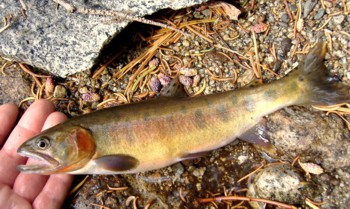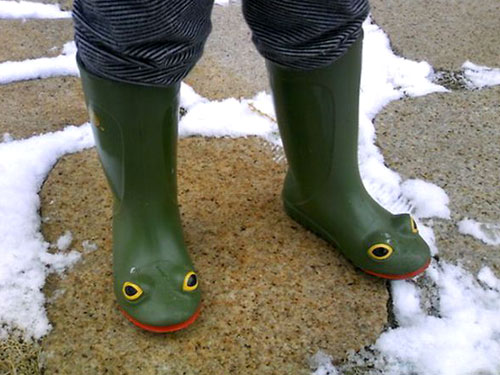The Chief wrote:rruby wrote:What data is this rather blanket statement based on?
Ahhh... the OP!
http://www.nytimes.com/2010/10/05/scien ... anted=2&hp
When the frogs vanish due to the fungus, the lakes will be void of both them and the trout that have been destroyed in order to reintroduce the frogs.
Both actions stem from Man's meddling.
The NY Times link has expired. What does OP stand for?
I suspect from reading Dr Vredenburg's 2006 paper "Removal of nonnative fish results in population expansion of a declining amphibian (mountain yellow-legged frog, Rana muscosa)" that the reduction of the frog population caused by the the non-native fish made them much less likely to rebound from the fungus die-off, or any serious microbial epidemic. If true, I can understand why they would want to remove the concomitant insult to the population that the non-native fish present. Anyway, I've included the Abstract from the above mentioned paper.
The mountain yellow-legged frog (Rana muscosa) was once a common inhabitant of the
Sierra Nevada (California, USA), but has declined precipitously during the past century
due in part to the introduction of nonnative fish into naturally fishless habitats. The objec-
tives of the current study were to describe (1) the effect of fish removal from three lakes
(located in two watersheds) on the small, remnant R. muscosa populations inhabiting those
lakes, and (2) the initial development of metapopulation structure in each watershed as R.
muscosa from expanding populations in fish-removal lakes dispersed to adjacent habitats.
At all three fish-removal lakes, R. muscosa population densities increased significantly fol-
lowing the removal of predatory fish. The magnitude of these increases was significantly
greater than that observed over the same time period in R. muscosa populations inhabiting
control lakes that remained in their natural fishless condition. Following these population
increases, R. muscosa dispersed to adjacent suitable (but unoccupied) sites, moving between
200 and 900 m along streams or across dry land. Together, these results suggest that large-
scale removal of introduced fish could result in at least partial reversal of the decline of R.
muscosa. Continued monitoring of R. muscosa at the fish-removal sites will be necessary to
determine whether the positive effects of fish eradication are sustained over the long-term,
especially in light of the increasingly important role played by an emerging infectious dis-
ease (chytridiomycosis, caused by Batrachochytrium dendrobatidis) in influencing R. muscosa
populations.
I don't know about meddling. I don't perceive it as that. People involving themselves in things that are none of their business I feel is meddling. The Feds are responsible for the conservation of these lands, and as such, it "is" their business. They might make mistakes, but as a taxpayer I do expect them to "do" something. Especially if it's the extinction of a species due in part to something they did in the first place. Otherwise they need a good explanation why they shouldn't do anything. An aversion to meddling is not one of them. Anyway, my last thoughts on the subject. Thought-provoking thread.






